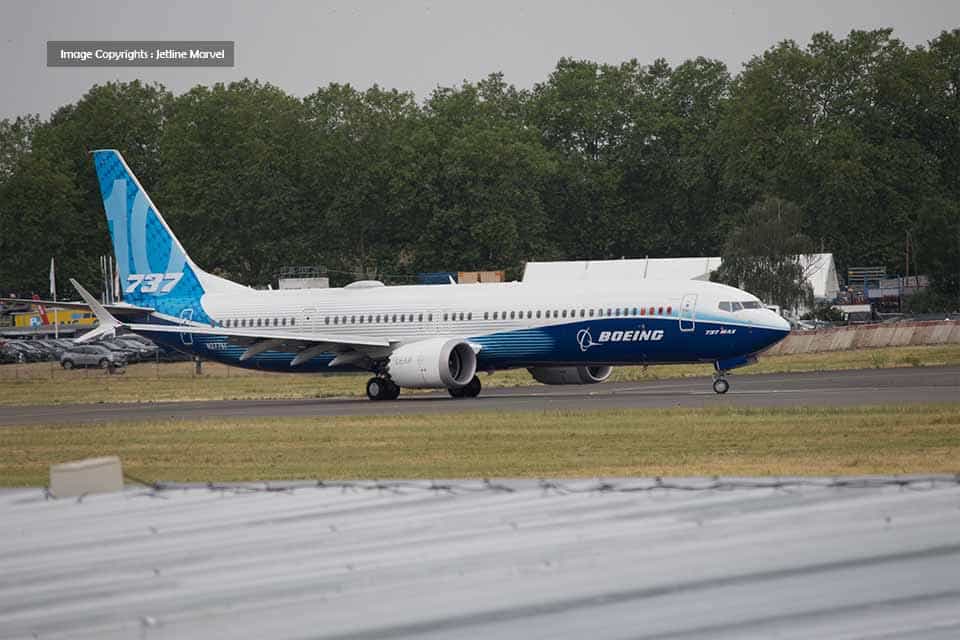Aerospace
Boeing’s three New Crises Spark Concerns, Focuses on Resolving Quality Concerns

In a troubling turn of events for aviation giant Boeing, a series of incidents involving its aircraft have raised significant concerns and prompted urgent actions from both the company and airlines.
These new issues have put Boeing back in the news and made regulators and the public pay even more attention to what’s going on.
LATAM Boeing 787 cockpit seat
One of the most alarming incidents involves Boeing’s flagship 787 Dreamliner jets. Following a report linking an accidental cockpit seat movement to a sudden plunge experienced by a LATAM Airlines plane en route to New Zealand, Boeing swiftly responded by recommending airlines to inspect switches on pilots’ seats.
The company’s directive, issued on Friday, underscores the gravity of the situation, with safety considerations taking precedence. Boeing’s recommendation advises airlines to examine the motorized boeing 787 Dreamliner cockpit seats during maintenance routines and provides instructions on disabling seat-moving motors. This precautionary measure comes in the wake of an incident where 50 individuals were injured during a flight drop, believed to be caused by seat movement.
United Airlines Boeing 737
Moreover, another unsettling incident emerged involving a boeing 737 Oregon, United Airlines flight operated by a Boeing 737-800. Upon landing at Medford Airport in Oregon, a fuselage panel was discovered missing from the aircraft. Although the flight proceeded smoothly and landed as scheduled, the absence of the external panel raises significant safety questions.
United Airlines has pledged to conduct a thorough examination of the plane and address any necessary repairs before returning it to service. The incident adds to Boeing’s growing list of challenges, further amplifying concerns about the integrity and maintenance of its aircraft. The narrative surrounding these incidents evokes a sense of unease within the aviation industry and among the traveling public.
The revelation that a seat switch malfunction could potentially lead to a catastrophic event underscores the importance of rigorous safety protocols and oversight. Boeing’s response, coupled with United Airlines’ commitment to addressing the issue promptly, highlights the collaborative efforts necessary to ensure the safety and reliability of commercial air travel.
A statement from United stated that an external Boeing panel had been discovered missing from the aircraft after it had been parked at the gate. The statement also stated that United will be performing a “thorough examination of the plane and completing all the needed repairs before it returns to service.”
In addition to six crew members, United reported that the aircraft was carrying 139 passengers. At 10:20 a.m., according to the airline tracking website Flight Aware, the flight left San Francisco and arrived in Medford early, landing at 11:36 a.m.
John Barnett, aged 62, a Boeing whistleblower who bravely reported on the poor quality conditions at Boeing facilities, tragically passed away, reportedly due to suicide. However, a close family friend disputes this narrative, asserting that Barnett had expressed concerns about his safety and had foreseen his demise. This unsettling development has left Barnett’s family and friends deeply troubled, leading to suspicions regarding the circumstances of his death. These suspicions have prompted a response from Boeing, as questions arise about the company’s responsibility and potential involvement in Barnett’s passing.

Aerospace
When Ratan Tata was denied entry to the airfield at the Aero India show, he waited

During our visit to Aero India 2019, we had the unexpected opportunity to see Ratan Tata at the event, which was a thrilling moment for us. However, there was a surprising hiccup when the security staff didn’t allow him to enter due to a lack of a security pass.
Despite this, he remained calm and patiently waited for about 20 minutes until a member of the Tata team brought him the required pass, after which he calmly proceeded inside. It was a humbling sight, showcasing his composed demeanor even in such situations.
Ratan Tata ji is not only a renowned industrialist but also a trained pilot, holding a pilot’s license. In 2007, he became the first Indian civilian to fly the F-16 Falcon during the Aero India show in Bangalore—a proud moment for the nation.
His passion for aviation extended beyond flying, as he played a key role in shaping India’s aerospace industry. Under his leadership, Tata ventured into manufacturing and maintaining aerospace components while upholding its legacy of quality. Notably, Tata’s collaboration with Airbus to develop and manufacture the C295 aircraft is a testament to its growing influence in the sector.
-

 Aviation2 months ago
Aviation2 months agoMicrosoft Flight Simulator Raises $3 Million to Bring Back the An-225 Mriya
-

 Airlines2 months ago
Airlines2 months agoQatar Citizens Can Travel to the United States Without a Visa
-

 Aviation2 months ago
Aviation2 months agoQatar Airways bans these new Electronic Devices on plane
-

 Defence2 months ago
Defence2 months agoWhich Country Has the Largest Fleet of Fighter Aircraft?
-

 Airlines1 week ago
Airlines1 week agoDAMAC Air: Dubai’s New Luxury Airline Offers Free Flights for Registration
-

 Airport2 months ago
Airport2 months agoWestern Sydney Airport Welcomes Its First Plane After 6 Years of construction
-

 Airlines7 days ago
Airlines7 days agoAir India to Launch aircraft maintenance training institute in Bengaluru
-

 Aviation2 months ago
Aviation2 months agoDid you know ? Once Boeing 747 carried 1088 passenger in 1991








